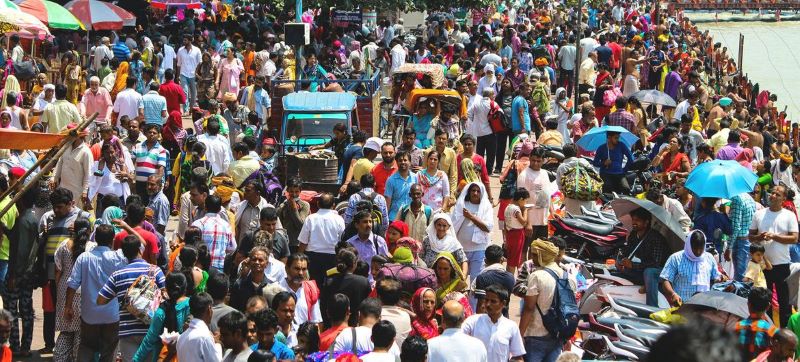 World Population
World Population
UN report world says population to touch 10.3 billion in the mid-2080s
The global population reached nearly 8.2 billion by mid-2024 and is expected to grow by another two billion over the next 60 years, peaking at around 10.3 billion in the mid-2080s.
It will then fall to around 10.2 billion, which is 700 million lower than expected a decade ago. That’s just one of the key findings revealed in Thursday’s World Population Prospects 2024 report published by the UN Thursday.
However, changes in global population are uneven and the demographic landscape is evolving, with rapid population growth in some places and rapid ageing in others, making reliable population data “more important than ever”, said the UN sexual and reproductive health agency (UNFPA), heralding the report which is published to coincide with World Population Day.
The report “must be used to reach and respond to the needs of those who have been left behind,” the agency added.
‘Everyone counts’
Marking the international day, UN Secretary-General António Guterres said it was key to accurately count everyone “because everyone counts.”
“Our rich human tapestry is only as strong as its weakest thread. When data and other systems work for those on the margins, they work for everyone. This is how we accelerate progress for all.”
To study this population data more closely, the 28th edition of World Population Prospects (WPP) published by the UN Department of Economic and Social Affairs (DESA) since 1951, provides the latest demographic data for 237 countries from 1950 to 2024 and projections up to the year 2100.
The WPP is crucial to monitor the Sustainable Development Goals, with about a quarter of the indicators relying on its data.
Lower fertility, an ageing population
The world’s overall fertility rates are dropping, with women having one child fewer on average than they did around 1990.
In more than half of all countries and areas, the average number of live births per woman is below 2.1 - the level required for a population to maintain a constant size.
Meanwhile, nearly a fifth of all countries and areas, including China, Italy, the Republic of Korea and Spain, now have “ultra-low fertility”, with fewer than 1.4 live births per woman over a lifetime.
Reaching the peak
As of 2024, population size has peaked in 63 countries and areas, including China, Germany, Japan and the Russian Federation, and the total population of this group is projected to decline by 14 per cent over the next thirty years.
The average age of the population of the world is also increasing.
By the late 2070s, the number of persons 65 years or older is projected to surpass the number of persons under 18.
This is in part due to the overall increase in life expectancy and decrease in mortality rates over the past three decades. By the late 2050s, more than half of all global deaths will occur at age 80 or higher, a substantial increase from 17 per cent in 1995.
While the slow growth or decline of populations is occurring mainly in high-income countries, rapid population growth will occur in low-income and lower-middle-income countries.
Specifically, Angola, the Central African Republic, the Democratic Republic of Congo, Niger, and Somalia, very rapid growth is projected, with their total population doubling between 2024 and 2054.
This population growth will increase demand for resources, especially in sub-Saharan Africa and South Asia and, combined with poorly managed urbanisation and rising living standards, it will worsen environmental impacts.
Climate change, a major challenge, affects these countries the most, where many rely on agriculture - and food insecurity is prevalent.
In countries including India, Indonesia, Nigeria, Pakistan and the United States, population is also expected to increase through 2054 and could potentially peak in the second half of the century or later.
Reproductive health
Central to population and development is the “recognition that women’s sexual and reproductive health and reproductive rights are cornerstones of sustainable development,” said Secretary-General Guterres.
Particularly in low-income countries, early pregnancies remain a challenge.
In 2024, 4.7 million babies, or about 3.5 per cent of the total worldwide, were born to mothers under the age of 18.
Of these, some 340,000 were born to children under 15, with serious consequences for the health and well-being of both the young mothers and their children.
Investing in the education of young people, especially girls - and increasing the ages of marriage and first childbearing in countries where these have an early onset - will have positive outcomes for women’s health, educational attainment and labour force participation, according to WPP data.
These efforts will also contribute to reducing the scale of the investments required to achieve sustainable development while ensuring that no one is left behind.
Support Our Journalism
We cannot do without you.. your contribution supports unbiased journalism
IBNS is not driven by any ism- not wokeism, not racism, not skewed secularism, not hyper right-wing or left liberal ideals, nor by any hardline religious beliefs or hyper nationalism. We want to serve you good old objective news, as they are. We do not judge or preach. We let people decide for themselves. We only try to present factual and well-sourced news.





